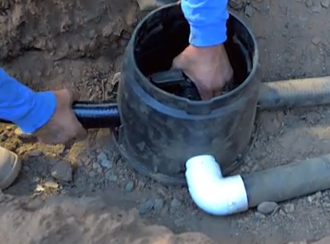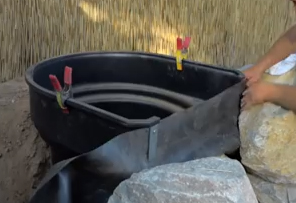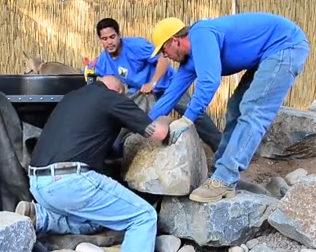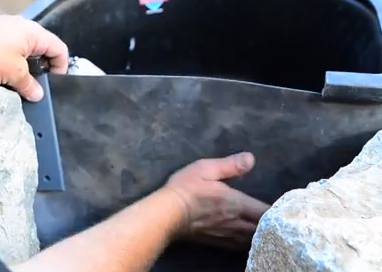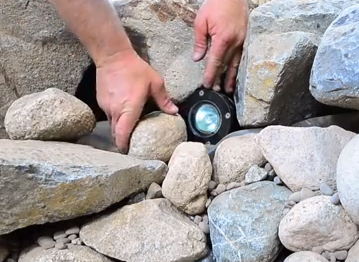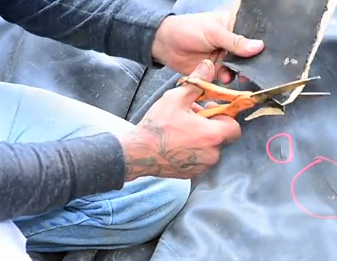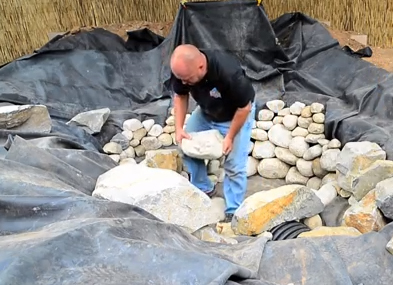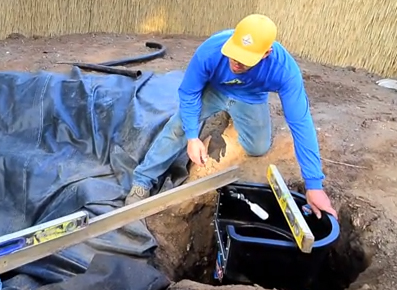Ponds, Streams & Waterfalls
Of all the steps we've covered so far in this series of videos on pond installation, this is the only one that might be considered atypical, basically because the need for completing this operation depends on the type of filtration system you're using. In this case, we're installing a permanent gravel bed in the waterfall/filter unit, which means we need to include a backwash system in the form of a three-way valve and a drain line to make the bed easy to clean, refresh and maintain. The great thing is
Earlier in this sequence of articles and videos, I mentioned how much I enjoy the fact that pond installation is an improvisational art form: You can roll through a design in your head and sketch it until your pencils are worn to nubs, but the reality is that working with boulders is a process of placement and on-site adjustment that ultimately brings a design vision to life. That's particularly true with waterfalls, which is why this single part of the series encompasses four videos and nearly 40 minutes of running time. And as you will notice, there are probably more
I've always been a demon when it comes to getting everything having to do with my pond skimmers right: If they're set up properly, they'll work so well that you rarely need to think about them - and that's always my goal, both for me and for my clients. Trouble is, you usually end up securing the liner to the faceplate at a fairly awkward point in
A surprising number of my clients come into the pond-buying process without having given any thought at all to how the watershape will look after the sun goes down. That probably has something to do with the fact that the big natural ponds they've encountered in their lifetimes have not benefited from any kind of illumination beyond the occasional pole-mounted floodlight. So they're in for a treat when we complete their pond and they watch it
In any given project, it's almost certain that we'll figure out a new way to nick or tear some spot on the 45-mil EPDM liners we use in our ponds. Sometimes it's a sharp edge on a heavy boulder we're jockeying into place; other times it's the random sort of harm to be done by shovel blades, knives, screwdrivers, awls and other tools you can't get away from on a job site. The great thing about EPDM liners is that repairing nicks and cuts is
I've often seen rock placement described as an "improvisational art" by others who've written for WaterShapes, and I couldn't agree more. Once the liner's in place and it's time to dress it up with everything from large boulders to tiny gravel, I get the sense that this is less a construction task than it is an exercise in creative manipulation. You'll see some of that creativity on display in the two videos linked below, but what you'll also see is that experience really does count: In setting rocks in place, you end up handling and rotating and flipping and fine-tuning the positioning of dozens or hundreds or even
I've often seen rock placement described as an "improvisational art" by others who've written for WaterShapes, and I couldn't agree more. Once the liner's in place and it's time to dress it up with everything from large boulders to tiny gravel, I get the sense that this is less a construction task than it is an exercise in creative manipulation. You'll see some of that creativity on display in the two videos linked below, but what you'll also see is that experience really does count: In setting rocks in place, you end up handling and rotating and flipping and fine-tuning the positioning of dozens or hundreds or even
The task highlighted in the video linked below - that is, the process of setting and leveling the skimmer - is right up there at the top of the list when it comes to determining the success or failure of a pond-installation project. In fact, it may be the most important of all with respect to aesthetics, because it's what sets the pond's water level and has a huge amount to do with how things will look to people who approach the water's edge. We don't do the digging for this part of the installation until
The task highlighted in the video linked below - that is, the process of setting and leveling the skimmer - is right up there at the top of the list when it comes to determining the success or failure of a pond-installation project. In fact, it may be the most important of all with respect to aesthetics, because it's what sets the pond's water level and has a huge amount to do with how things will look to people who approach the water's edge. We don't do the digging for this part of the installation until










